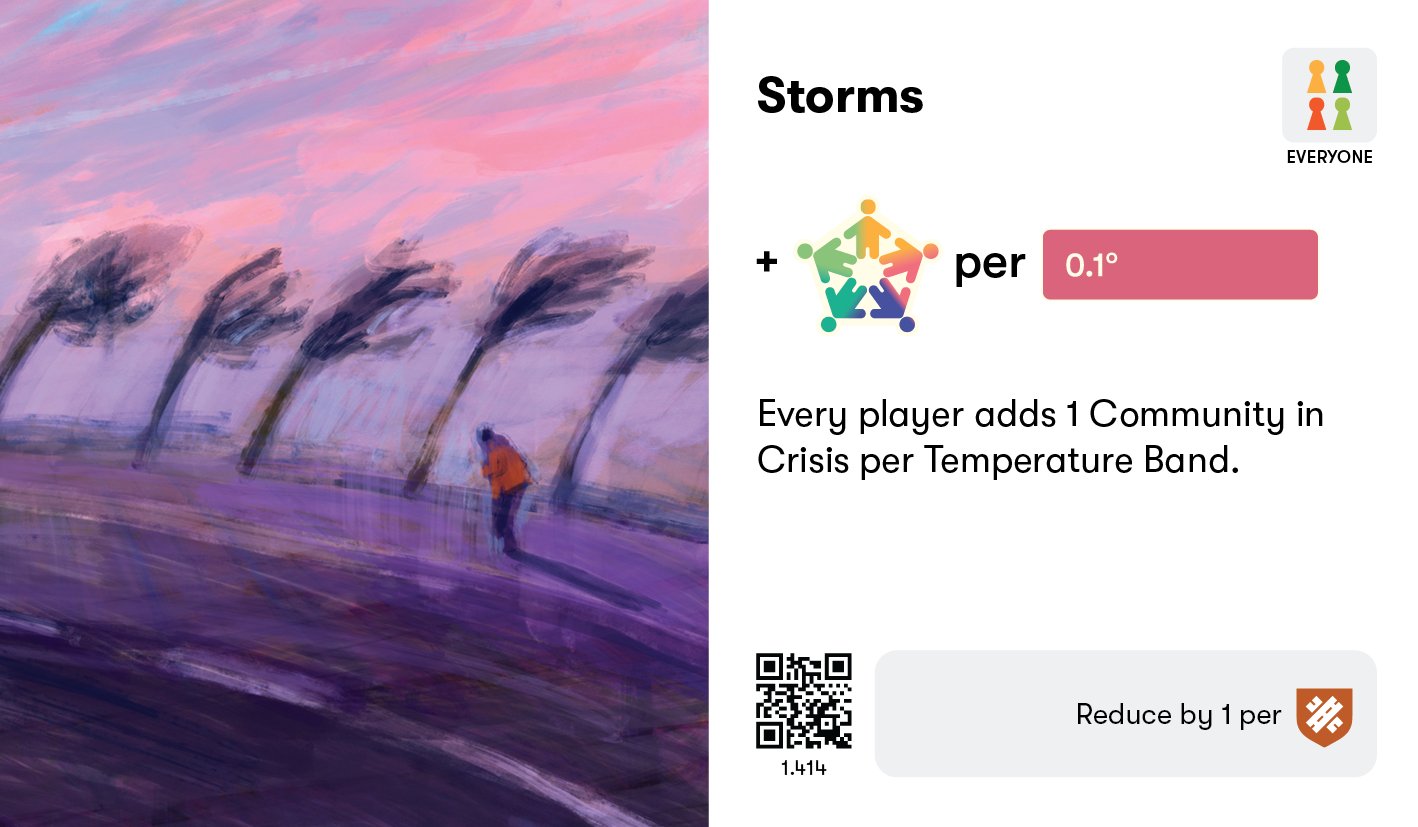Storms
Crisis
Storms come in different shapes and sizes around the world. They can bring heavy rain, snow, hail, lightning, and strong winds. Cyclones, or hurricanes and typhoons, are powerful storms which form over oceans. Powerful rainstorms (or snowstorms) can happen all over the world.
Heavy rainfall can cause flash flooding, washing away cars or infrastructure. It can cause rivers to rise and flood entire towns and cities. Heavy winds can destroy buildings and other infrastructure.
The climate emergency is making our atmosphere warmer, which means it can hold more water and result in intense downpours. Heavy rainfall has already become more common in most parts of the world due to the climate emergency, and this pattern is accelerating.
If stormwater causes sewage to overflow, major disease outbreaks can happen. Storms can also cut electricity, which can cause serious disruption and risk loss of essential services and healthcare provision.
Good drainage systems can reduce the chance of disease outbreaks, as well as limiting the amount and speed of water flowing over the ground. Building houses and infrastructure away from floodplains and flood zones can avoid major losses. Early warning systems can also save lives by helping people take shelter before a storm.
Every player must add 1 Community in Crisis per Temperature Band.
Players can reduce this effect by 1 for each Infrastructure Resilience token in their player board.
For example: 5 Temperature Bands – 3 Infrastructure Resilience = add 2 Communities in Crisis.
Resilience tokens are not discarded.

Explainer: How climate change is fueling hurricanes (Reuters)
How climate change is making hurricanes more dangerous (Yale Climate Connections)
Climate Impacts on Water Utilities (US Environmental Protection Agency)
Campaign for action by the authorities. Governments have a critical role to play in defending communities from storms, by setting up monitoring and alert systems; investing in infrastructure maintenance and repairs to prevent storm damage and requiring flood risk to be considered in zoning, planning and development control policies.
Understand how storms might affect you and your home, and take action to prevent risks.
Join community networks to support people affected by storms, such as homeless people, or people whose homes are damaged by storm impacts.